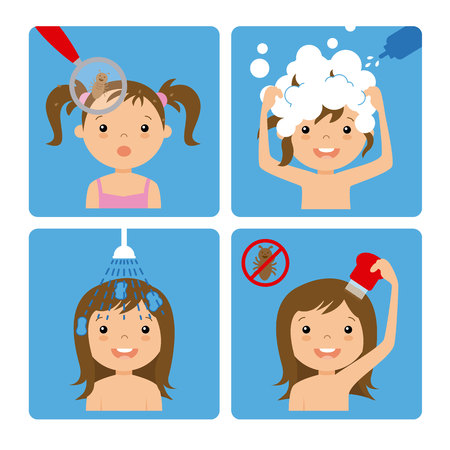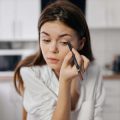Why Sunscreen Labels Matter
When it comes to protecting your skin from the suns harmful rays, understanding sunscreen labels is more than just a detail—its essential for effective sun safety and long-term skin health. In the U.S., the FDA regulates sunscreen products to ensure they meet certain standards, but navigating all the information on a sunscreen bottle can feel overwhelming. By learning how to read and interpret sunscreen labels, you empower yourself to make choices that fit your lifestyle, skin type, and local climate. Whether youre heading to the beach in California, hiking in Colorado, or just running errands around town, knowing what’s inside your sunscreen and how it works helps maximize protection against sunburn, premature aging, and even skin cancer. So before tossing any old bottle into your bag, let’s break down why those tiny words and numbers matter—and how they can make a big difference for your health.
2. Breaking Down Active Ingredients
When you’re scanning a sunscreen label in the U.S., one of the first things to check is the list of active ingredients. These are the power players that actually provide protection from UV rays. There are two main types: chemical and mineral (sometimes called physical) filters. Each comes with its own set of benefits, and knowing the difference can help you pick what’s best for your skin type, lifestyle, and values.
Chemical vs. Mineral Sunscreen: What’s the Difference?
| Type | Main Ingredients | How It Works | Best For |
|---|---|---|---|
| Chemical | Oxybenzone, Avobenzone, Octocrylene, Octinoxate, Homosalate | Absorbs UV rays and transforms them into heat, which is released from the skin | People who want lightweight, invisible formulas; often preferred under makeup or for water/sweat resistance |
| Mineral (Physical) | Zinc Oxide, Titanium Dioxide | Sits on top of skin and physically blocks/reflects UV rays | Sensitive skin types; those seeking “reef-safe” options or formulas less likely to cause irritation |
Why Active Ingredients Matter for Your Skin
Chemical filters tend to feel lighter and disappear into your skin without a trace—great if you hate that greasy feeling or white cast. On the other hand, mineral sunscreens are often recommended for kids, people with sensitive or acne-prone skin, or anyone looking for gentler formulas. And if you’re concerned about environmental impact (like coral reefs), some U.S. states even regulate chemical sunscreen ingredients near beaches.
Tips for Decoding Labels:
- Look for Broad Spectrum: This means the sunscreen protects against both UVA (aging) and UVB (burning) rays.
- Check for Allergens or Sensitizers: If you have sensitive skin, watch out for fragrance or certain preservatives along with active ingredients.
- Consider Your Activities: Some chemical sunscreens offer better water resistance; mineral ones may need more frequent reapplication if you’re sweating or swimming.
Your Takeaway:
The bottom line? Both types can be effective when used correctly—what matters most is picking one you’ll use every day. Flip that bottle over and give those active ingredients a closer look!

3. SPF Numbers and What They Really Mean
When you pick up a bottle of sunscreen, one of the first things you’ll notice is the SPF number. But what does SPF actually mean? SPF stands for Sun Protection Factor, and it measures how well the sunscreen protects your skin from UVB rays—the kind that cause sunburn and can contribute to skin cancer. A higher SPF number means more protection, but it’s not as straightforward as “higher is always better.” For example, SPF 15 blocks about 93% of UVB rays, while SPF 30 blocks around 97%, and SPF 50 blocks about 98%. The increase in protection isn’t exponential, so don’t be fooled into thinking SPF 100 gives double the protection of SPF 50.
UVA vs. UVB: What’s the Difference?
It’s important to know that SPF only refers to UVB protection. UVA rays penetrate deeper into your skin, leading to premature aging and increasing the risk of skin cancer. To get comprehensive coverage, look for sunscreens labeled as “broad-spectrum,” which means they protect against both UVA and UVB rays.
How Much Coverage Does Your Skin Actually Need?
The American Academy of Dermatology recommends using a broad-spectrum sunscreen with at least SPF 30 for everyday use. But remember: no sunscreen offers 100% protection. It’s also crucial to apply enough—about one ounce (a shot glass full) to cover an adult body—and reapply every two hours or after swimming or sweating. Don’t skimp on areas like ears, tops of feet, and the back of your neck!
Bottom Line
Reading the label closely helps you choose a sunscreen that meets your specific needs—whether you’re heading to the beach, going for a run, or just spending time outdoors. Understanding what SPF really means gives you the power to make safer choices for your skin under the American sun.
4. Reading Expiration Dates
When it comes to sunscreen, knowing how to find and understand expiration dates is essential for keeping your skin protected. Most sunscreen bottles sold in the U.S. are required by the FDA to list an expiration date unless stability testing has shown their formula lasts at least three years. You can usually locate the expiration date stamped on the bottle’s bottom, near the crimped edge of a tube, or on the back label—sometimes you’ll see it as “EXP” followed by a month and year (like EXP 06/2026).
Why Expiration Dates Matter
Sunscreen ingredients can break down over time, especially when exposed to heat or sunlight, making them less effective at blocking UV rays. Using expired sunscreen may mean you’re not getting the level of sun protection listed on the label, which increases your risk for sunburn and long-term skin damage.
Where to Find Expiration Dates on Sunscreen Packaging
| Packaging Type | Common Location of Expiration Date |
|---|---|
| Bottle | Bottom or back label |
| Tubed cream/gel | Crimped edge or back label |
| Spray canister | Bottom or side of canister |
What Happens If You Use Expired Sunscreen?
If you use sunscreen past its expiration date, there’s no guarantee it will provide adequate protection—even if it looks and smells fine. The active ingredients might have degraded, leaving your skin vulnerable. To stay safe, always check the date before heading out, and when in doubt, toss it out. Remember: Your skin deserves fresh protection every time!
5. Water Resistance: What You Need to Know
When you’re enjoying a pool day, hitting the beach, or just working up a sweat outdoors, understanding water resistance claims on sunscreen labels is key to staying protected. In the U.S., you’ll often see sunscreens labeled as “water resistant (40 minutes)” or “water resistant (80 minutes).” This means your sunscreen will maintain its SPF protection for either 40 or 80 minutes while you’re swimming or sweating — but not indefinitely.
Decoding Water Resistance Claims
The FDA strictly regulates these terms, so if your sunscreen says “water resistant,” it’s been tested to ensure it keeps working during the stated time period under wet conditions. Note that no sunscreen is truly “waterproof” or “sweatproof”—those terms aren’t allowed on American products anymore because they can be misleading.
How Long Does Protection Last?
If you’re in and out of water or sweating heavily, always check the label for its water resistance duration. After the listed time—whether it’s 40 or 80 minutes—you need to reapply. Even if you towel off before that time is up, it’s smart to reapply since toweling can wipe away your protection.
Real-Life Tips for Reapplying
To stay safe under the sun, set a timer when you go swimming or start exercising outdoors. Carry a travel-size sunscreen in your beach bag, gym tote, or backpack for easy access. And remember: always reapply immediately after swimming, sweating a lot, or towel-drying. It’s a small step that makes a big difference for your skin health!
6. Other Key Label Features
When you’re browsing sunscreen options at your favorite store or online, you’ll notice a variety of other terms on the label that can influence your buying decision. Let’s decode some of the most important ones so you can confidently choose what’s best for you and your family.
Broad Spectrum
This is a must-have feature for any good sunscreen in the U.S. If a label says “broad spectrum,” it means the product protects against both UVA and UVB rays. UVA rays prematurely age your skin, while UVB rays cause sunburn—so broad-spectrum coverage is your best bet for overall protection. The FDA requires sunscreens labeled as “broad spectrum” to meet certain standards, making this a reliable indicator when comparing products.
Fragrance-Free vs. Unscented
If you have sensitive skin or allergies, pay attention to terms like “fragrance-free” and “unscented.” They aren’t the same! “Fragrance-free” means no fragrances were added, while “unscented” may still contain masking scents to cover up chemical smells. For the most sensitive skin, “fragrance-free” is typically safer, but always check the ingredient list if you’re concerned about irritation.
Reef-Safe
Planning a trip to Hawaii or just want to be eco-conscious? Look for “reef-safe” or “reef-friendly” on the label. This means the sunscreen doesn’t contain oxybenzone or octinoxate—chemicals known to harm coral reefs. Some U.S. states and coastal areas now regulate these ingredients, so choosing reef-safe options helps protect both your skin and our oceans.
Other Helpful Terms
- Hypoallergenic: Designed to reduce the risk of allergic reactions, though there’s no guarantee it will work for everyone.
- Non-comedogenic: Won’t clog pores—great if you’re prone to breakouts.
- Pediatrician/dermatologist tested: Indicates extra testing for safety, especially important for kids or those with sensitive skin.
Bottom Line
The key takeaway? Sunscreen labels in the U.S. are packed with info that helps you pick exactly what you need based on your activity, skin type, values, and destination. Knowing what these terms mean lets you make an informed—and empowered—choice every time you shop for sun protection.


